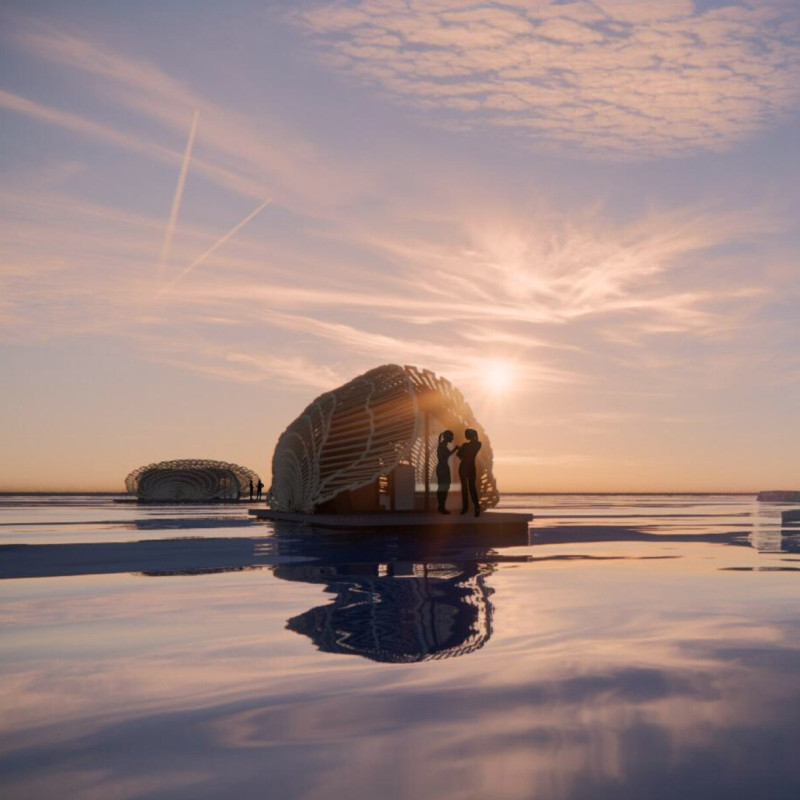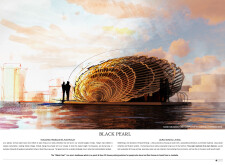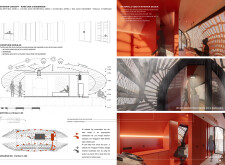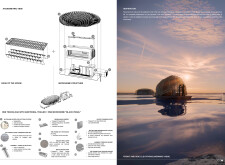5 key facts about this project
### Overview
The "Black Pearl" microhome project is situated within the context of Australia’s increasingly challenging housing landscape, driven by climate-induced displacement, particularly from events such as forest fires. This initiative focuses on providing a sustainable housing alternative through its innovative microhome design, which integrates advanced technologies for environmental responsiveness, rapid construction methods, and community-oriented features. The concept draws inspiration from natural forms, particularly the pearl mussel, symbolizing both resilience and ecological adaptation.
### Spatial Configuration and Materiality
The design of the microhome features a fluid, shell-like exterior that enhances both aesthetics and aerodynamic performance while ensuring structural integrity. Interior spaces are efficiently arranged to maximize usability, incorporating multifunctional areas for living, working, and sleeping. High-quality, eco-friendly materials underscore the project’s sustainability goals, including 100% recycled wood for the framework, mycelium for natural insulation, polypropylene for effective water collection, bamboo for durable terrace boards, and steel for reinforcement. The use of these materials not only addresses waste reduction but also promotes an environmentally considerate approach to construction.
### Environmental Stewardship and Community Integration
A central component of the microhome's design is its advanced water management system, which captures rain and atmospheric moisture via fog nets and mycelium filtration systems. The integration of the "Kingspan BioDisc Swale Treatment" for wastewater management ensures that pollution is minimized, fostering ecological balance. Additionally, solar panels are installed to harness renewable energy, further supporting the project's sustainability objectives. The mobility aspect of the microhome allows residents to relocate as needed, enhancing accessibility and adaptability. Overall, this initiative encourages community engagement by allowing residents to choose locations that align with socio-demographic needs while maintaining ecological sensitivity.






















































